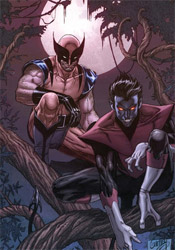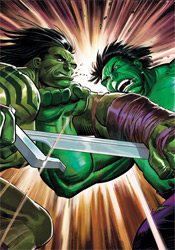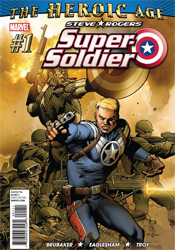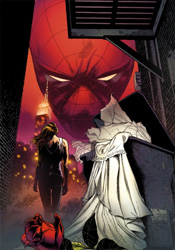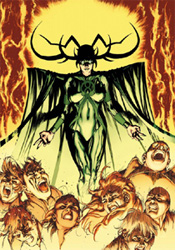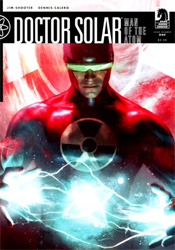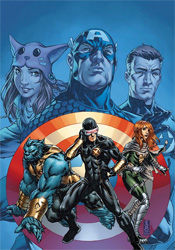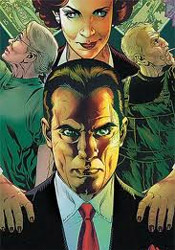
As the final issue of Brian K. Vaughan's latest epic, Ex Machina #50 is facing a lot of loose ends before it can finally close the lid on the super-powered savior of the South Tower on September 11th. I might as well level with you right out of the gates – there aren't enough pages to answer or even acknowledge most of them. In fact, Ex Machina's final issue is as much a product of the forty-nine episodes that came before as it is a swift, complete bookend. This is a series that's thrived on stalling readers for as long as it can, absorbing itself in comparably mundane distractions when the world's falling down outside the window. It's a tale that keys on Hundred's actions on 9/11, while never actually taking the time to relive them in much detail.
Vaughan's tendency to concentrate on minutiae in the place of linear storytelling is on proud display again this month, as the aftereffects of a citywide riot and an honest-to-god portal to another dimension opened wide on New York streets take a back seat to a quiet conversation at the office and a UN press event. That's not to say there's no closure, because eventually the mood does shift to something more appropriate for final sentiments, but I couldn't help but watch the quickly-dwindling page count as the story meandered along without much concern for its brief remaining timeline. This issue is half-full of payoffs and finality, but also half-full of filler that would've fit every bit as comfortably in a nondescript issue crammed between major storylines. It's a conundrum, and in many ways that's perfectly fitting.
Tony Harris, who's stuck around as artist on this series from the word go, hasn't been without his struggles. Particularly as the story began to wind down, the rush to meet a deadline became painfully obvious as Harris's formerly strict, disciplined style gave way to more rushed, less thoughtful compositions. Fortunately for all, Harris managed to snap himself out of that funk for the book's final chapters, which may or may not have something to do with why they've taken so long to ship. Whatever the reason, the work Harris hands in this month is worth the wait – it's a fine return to form that showcases his versatility and control. Tony's job hasn't been easy over the years, juggling the stale décor of city hall and a variety of black suits with fever dream landscapes and a colorful supporting cast, but it's an act he's perfected along the way. This issue serves as a terrific swan song, a final chance to show us what he's learned from that experience.
A great two-man partnership is always something I'll celebrate, and Vaughan and Harris have proven they fit the bill. While Ex Machina hasn't been the most consistent title in my pull list over the years, the climactic moments have been grand enough to keep up-to-date for, while the less thrilling chapters did just enough to maintain some momentum. I'll mourn the vacancy in my monthly subscription, but I applaud the decision to step away when the timing is right. It's a suitable, if slightly odd, conclusion to what turned out to be a grand series. Borrow it.
Overall Score: 7.5
